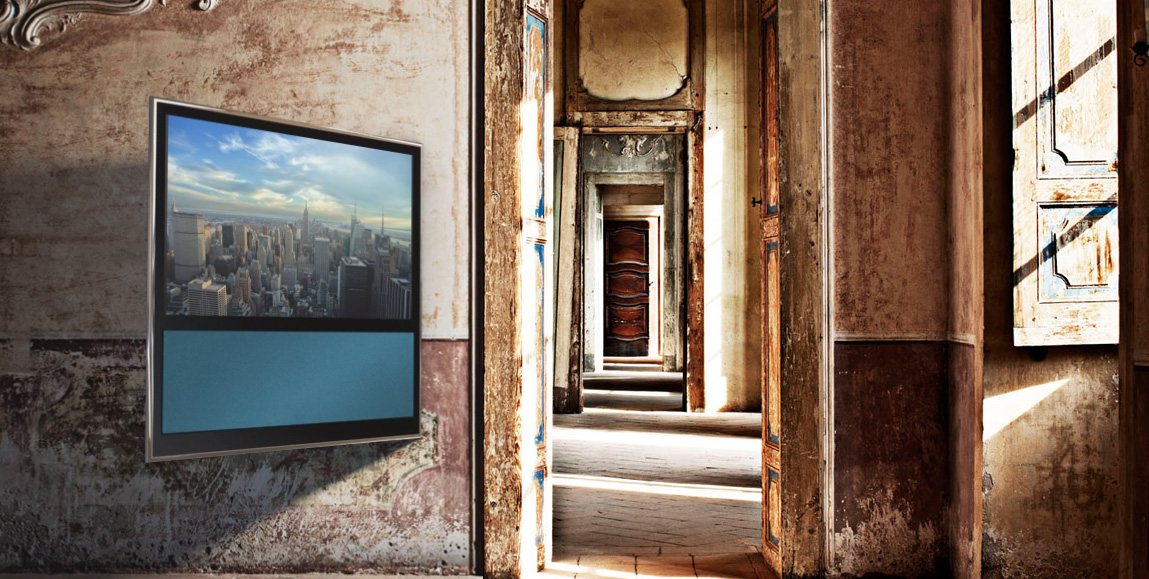
Flat-screens present quite the conundrum in modern residential design. Every home typically needs at least one, but rarely does anyone (home owners and architects, alike)want it dominating the look and feel of a room. The design direction often communicated to us by homeowners is that they want clear sightlines to the flat-screen from a comfortable viewing area, but when it’s not in use, they don’t want to see it. Pair this with the fact that these screens keep increasing in size, and you’ve got somewhat of a design puzzle to solve. The solution to any problem typically starts with a bit of research, and this was a particularly rewarding design issue to gather information on. The results were so interesting, in fact, that it makes for a good blog post.
Flat-Screen as Room Feature in the NOHO Interior by Avro|KO
A handsome composition is created by supplementing the flat-screen with a wooden easel. The presentation is unapologetic and lends character to the room. It’s a brilliant idea as the flat-screen is hidden in plain sight.
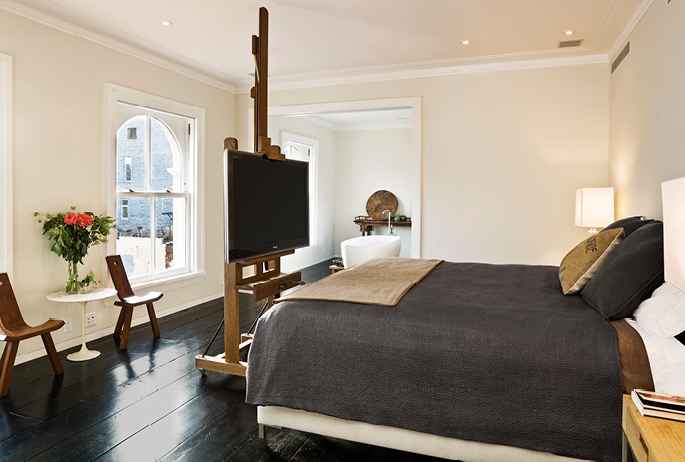
Pivoting Flat-Screen in Mexico City by vgz(a) Architects
This clever solution allows two different spaces to access the flat-screen, or easily conceal it. We like that one of the rooms could be a larger living/entertaining space, while the second room could be a more intimate den or lounge.
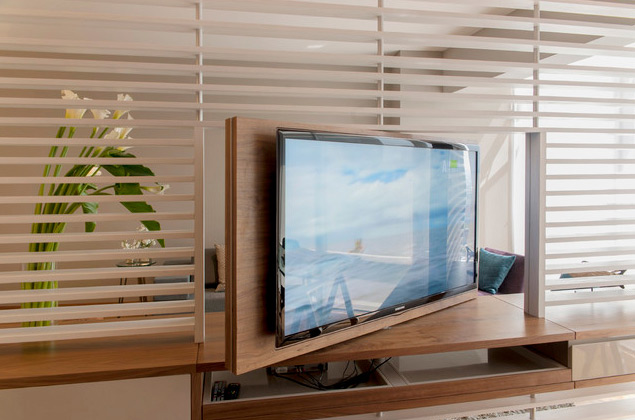
Full Integration with Fire Box by Scenario
Rather than creating systems to hide or move the flat-screen, Scenario has simply integrated the flat-screen so seamlessly with the firebox that the composition is stealthy-chic. Obvious concerns can be directed toward the compatibility of the two inseparable systems (Like: What happens when you want a bigger flatscreen?), but overall we’re big fans of design so good that you don’t want to hide it.
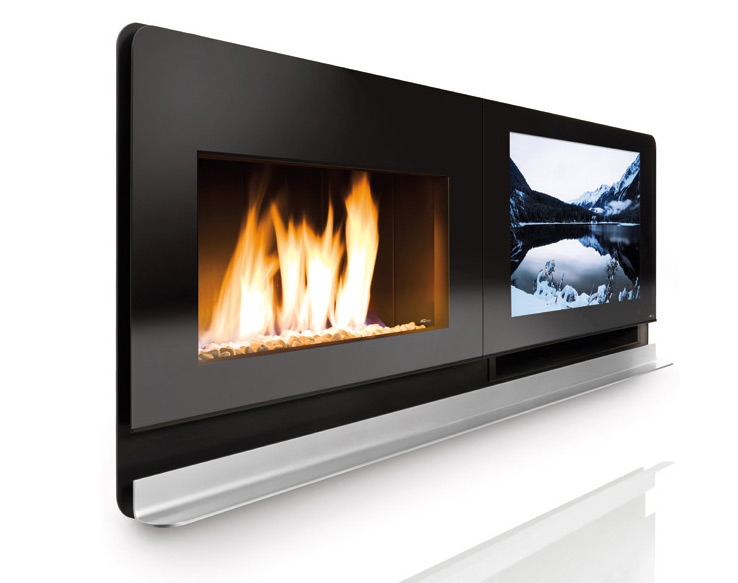
Cover as Texture
In the right home, this method of covering the flat-screen with a more interesting texture could be a good solution. While we like the idea of simple sliding panels to access the flat-screen, the idea of covering up something sleek and modern (the flat-screen) with old pieces of wood from a barn door gives us pause.
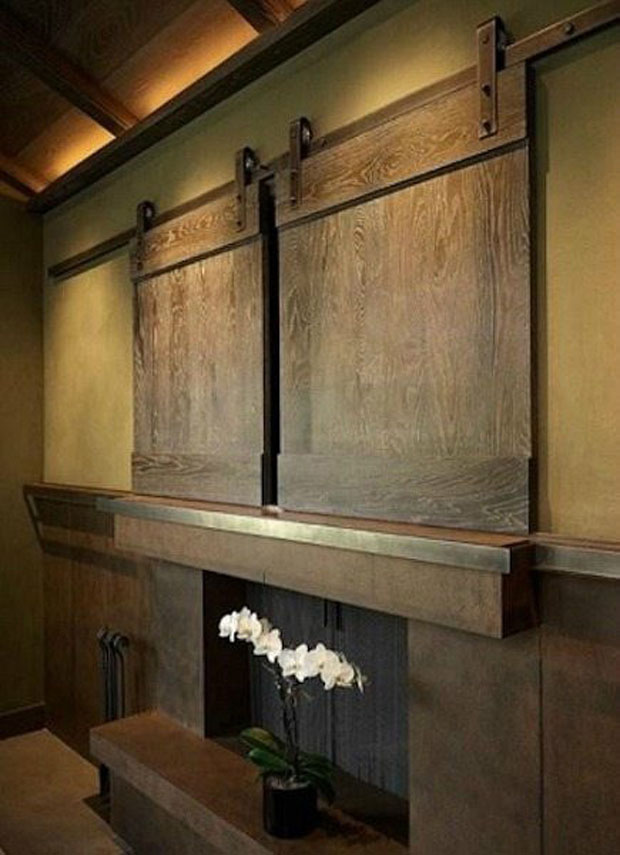
Concealed Pop-Up Flatscreen in the Amsterdam Townhouse by Stanic Harding
While it’s a clean solution to removing the flatscreen from eyesight when not desired in the room, we wonder about the technicalities of such a system. The mechanics seem a little fussy and it most likely takes up considerable area in the cabinet. Nonetheless, it’s pure and modern.

Recessed Fold-Down Ceiling Hatch
The whole thing just seems so fussy. And once you’ve framed out the opening, installed the hardware, run the data lines, and dry-walled around the panel, you’re still confined to a limited cone of view. With all the work involved in a recessed ceiling solution, it seems like a drop down projection system would offer more possibility.
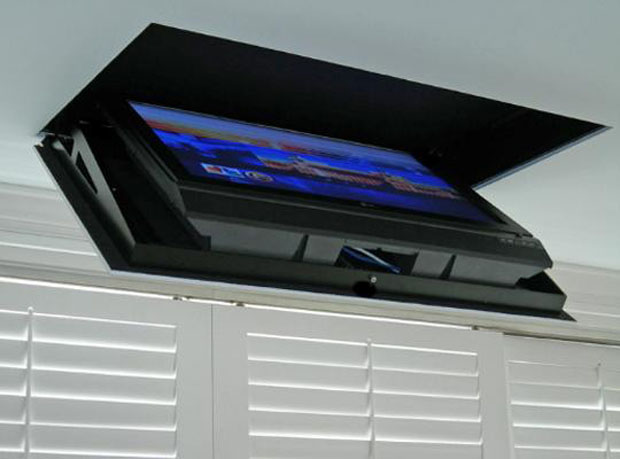
Full Integration of Flat-Screen with Walls by FORMS+SURFACES
Most of the time, our knee-jerk reaction is to integrate the flat-screen so well into the room that it simply belongs there. The LEVELe system by FORMS+SURFACES does a nice job of this and the concept of lining up wall panels, shadow lines and flat-screens could be achieved with a number of different materials and methods.
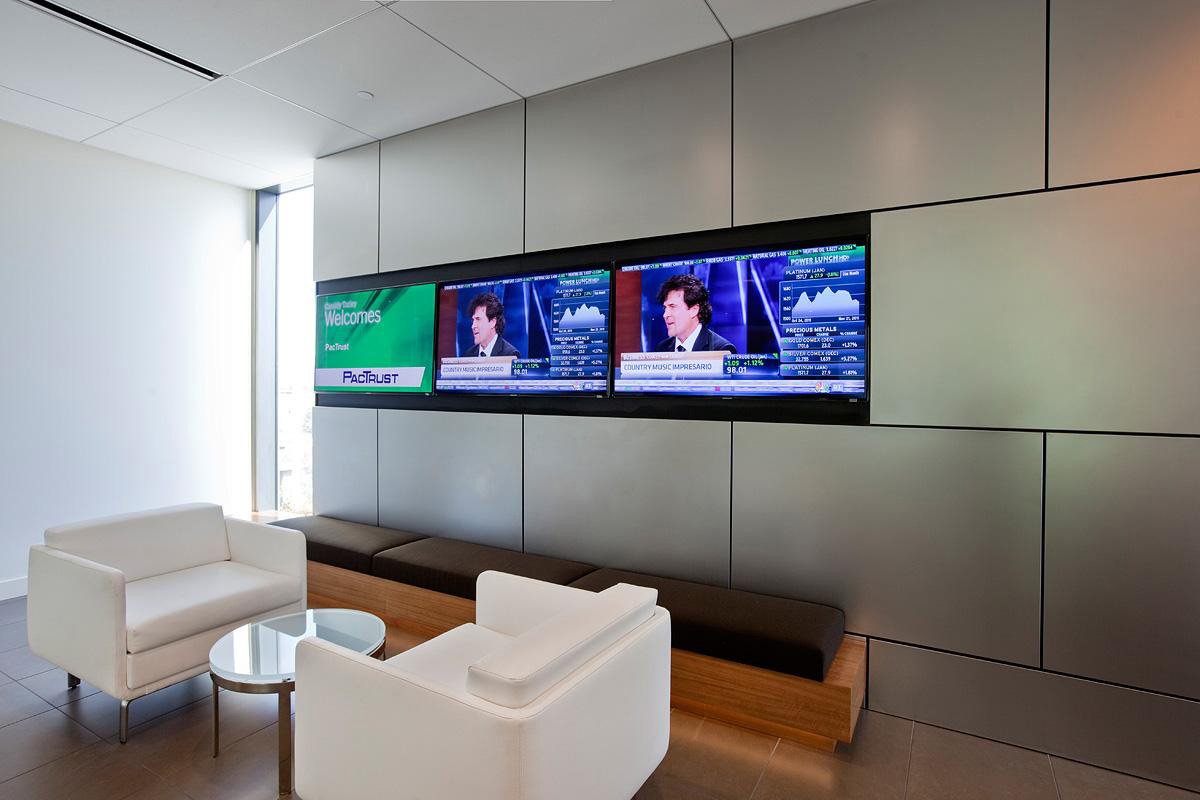
Invisible Flat-Screens
While not yet available on the market, forward-thinking companies like Loewe are blazing into new territory with flat-screens that become transparent when turned off. A flat-screen that essentially disappears might be the ultimate expression of modernism and we’re looking forward to the availability of this innovation.
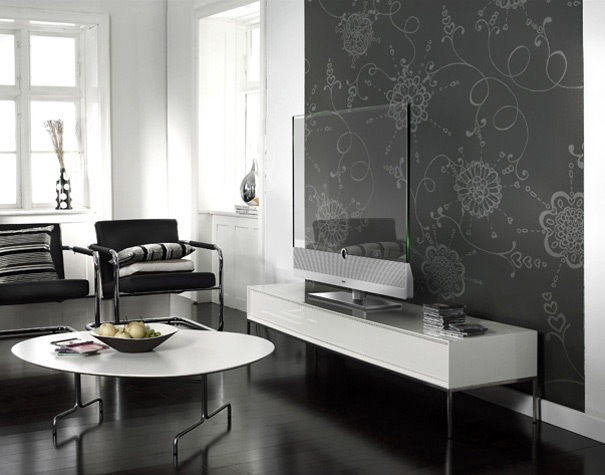
Transparent Mirror-Glass
We’re still a bit dubious about the technology since we haven’t seen it with our own eyes yet, but the application has potential. By using polarized glass, the flat-screen image can pass through the mirror; when off, however, the flat-screen disappears behind the reflection.
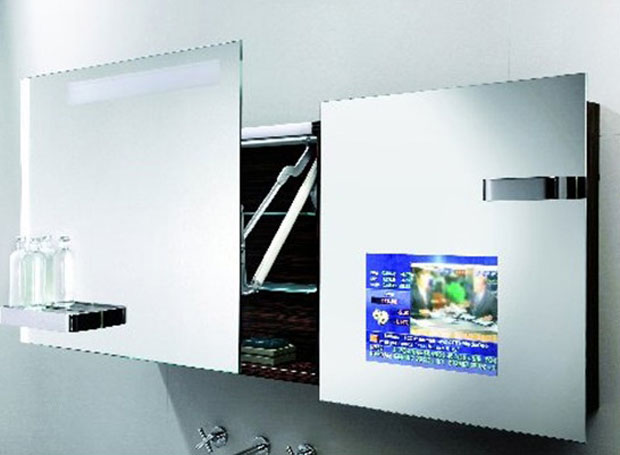
Flat-Screen as Sculpture
There are a few flat-screens out there so well-designed, that they can hold their own in the room and even look good when they’re not in use. Bang & Olufsen has a portfolio full of sexy screens that fit the bill.
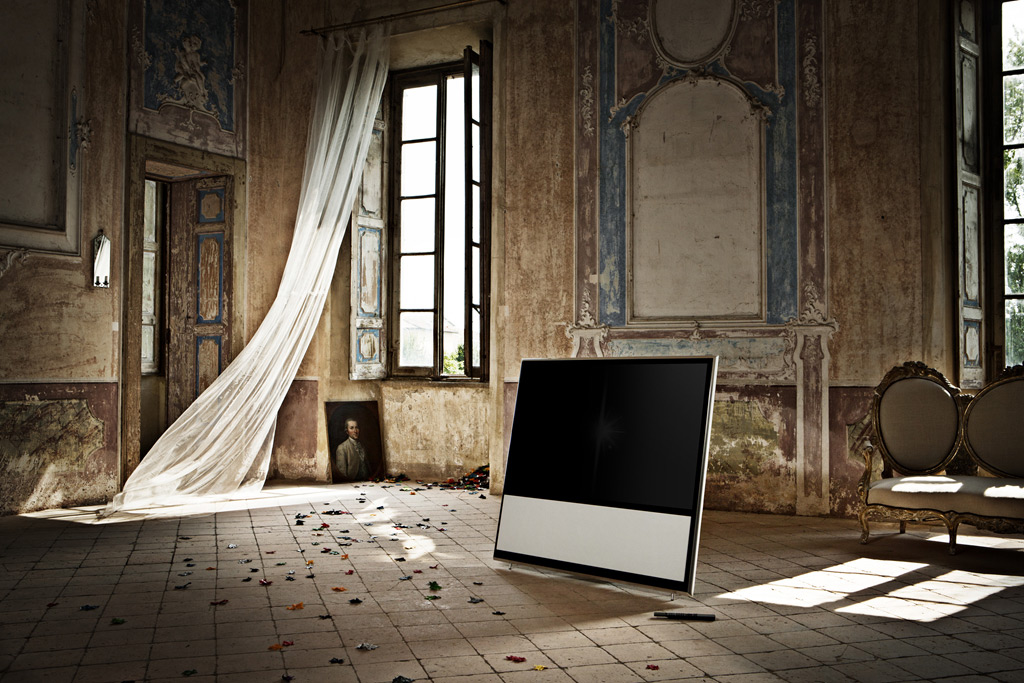
Let us know if you’ve seen any creative solutions for designing with and around flat-screens.
Cheers from team BUILD





